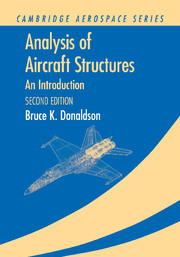Book contents
- Frontmatter
- Contents
- Introduction to the Second Edition
- Introduction to the First Edition
- List of Repeated Engineering Symbols
- Acknowledgments
- Part I The Fundamentals of Structural Analysis
- Part II **Introduction to the Theory of Elasticity**
- Part III Engineering Theory for Straight, Long Beams
- Part IV Work and Energy Principles
- Part V Energy-Based Numerical Solutions
- 16 **Precursor Numerical Analyses**
- 17 Introduction to the Finite Element Method
- 18 Finite Element Truss Problems
- 19 Basic Aspects of Multidimensional Finite Elements
- 20 The Unit Load Method for Determinate Structures
- 21 The Unit Load Method for Indeterminate Structures
- Parts IV and V Review Questions
- Part VI Thin Plate Theory and Structural Stability
- Appendix A Additional Topics
- Appendix B Selected Answers to Exercises
- References
- Index
17 - Introduction to the Finite Element Method
from Part V - Energy-Based Numerical Solutions
Published online by Cambridge University Press: 05 June 2012
- Frontmatter
- Contents
- Introduction to the Second Edition
- Introduction to the First Edition
- List of Repeated Engineering Symbols
- Acknowledgments
- Part I The Fundamentals of Structural Analysis
- Part II **Introduction to the Theory of Elasticity**
- Part III Engineering Theory for Straight, Long Beams
- Part IV Work and Energy Principles
- Part V Energy-Based Numerical Solutions
- 16 **Precursor Numerical Analyses**
- 17 Introduction to the Finite Element Method
- 18 Finite Element Truss Problems
- 19 Basic Aspects of Multidimensional Finite Elements
- 20 The Unit Load Method for Determinate Structures
- 21 The Unit Load Method for Indeterminate Structures
- Parts IV and V Review Questions
- Part VI Thin Plate Theory and Structural Stability
- Appendix A Additional Topics
- Appendix B Selected Answers to Exercises
- References
- Index
Summary
Introduction
The finite element method introduced in this chapter is the routine choice for the analysis of structures in government and industry, large companies and small. The finite element method is especially useful in the aerospace sciences and all related fields. For engineering applications, the finite element method was introduced to the engineering community by aerospace structural dynamicists in Ref. [49]. It is not the only useful, or necessary-to-know, method (one other method requires discussion), but it dominates because it is the only method suitable for large, complicated structures such as airplanes, helicopters, ships, and land vehicles, as well as the small redundant structures discussed here. It is particularly broad in scope. As a mathematical concept the finite element method is applicable to a wide variety of problems including such diverse problems as those of fluid dynamics, heat transfer, electromagnetic fields, and electrical circuits. As a mathematical concept, it is an adaptation of the Rayleigh–Ritz method. In this adaptation, instead of the requirement for choosing approximation functions for each new analysis, a finite element analysis can be computer programed because the same functions are repeatedly used for the same type of structural element. Instead of using the complicated functions that are sometimes necessary to meet boundary condition requirements of complicated structures, this adaptation uses simple functions, almost exclusively polynomial terms for quick computer processing.
- Type
- Chapter
- Information
- Analysis of Aircraft StructuresAn Introduction, pp. 545 - 601Publisher: Cambridge University PressPrint publication year: 2008



